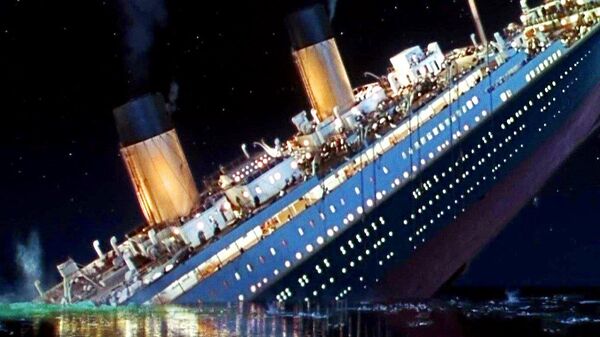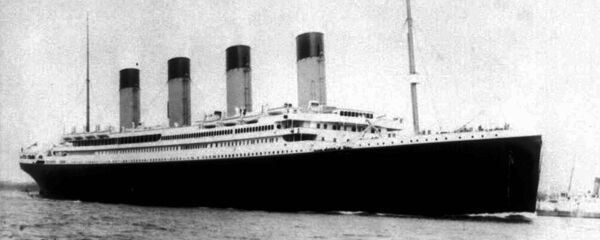The stories of the six Chinese survivors, however, were reported overseas after the shipwreck, in which they were depicted as cowards who sneaked into lifeboats or as despicable men who stole the chance of survival from others by "dressing as women."
To British filmmaker Arthur Jones, it seems unbelievable that none of the Chinese survivors came into the spotlight, and that people in China did not even know there's an incredible Chinese story behind the epic tragedy.
Jones and his team are shooting a documentary named The Six, which presents the story of the Chinese survivors and their descendants. The China part of the shooting is scheduled for October and the film is expected to be released early next year.
"It's not a story of disgraceful and terrible behavior, but largely a positive story about how the eight tried to survive, though two did not make it," Jones told the Global Times on Monday.
"And the story deserves to be told and in a way that is respectful and faithful," he added.
Locating Descendants
For Jones and his team, an important part of presenting the truth is to find their descendants to tell the Chinese story behind the incident, but it is incredibly challenging.
The six sailors were traveling around in the 1920s and they were disconnected from their roots in China. Another challenge is getting information from people who might know something but they are not sure of whether what they know is true or not, said Jones.
"In most cases, including the descendants that are currently living in China, they have a feeling that they are connected to the story, but they are never sure about it," he added.
The team first tried online, where they did not find actual evidence of what they were looking for but they did find indirect connections, or "shadows," of potential descendants.
There were people who believed they were the descendants and approached the team via social media. The team then worked with them to trace the real descendants.
The search for descendants used a variety of methods, even such as drawing a line in a map from where the potential descendants live now to the nearest place that the survivor was connected to.
Their efforts have paid off, and so far, Jones and his team have traced descendants to the UK, US, Cuba and Canada.
"We found new information that was never known before about all of the six," said Jones, adding that they have found "several" descendants and their families living in and outside of China, including one near Shanghai and another near Chicago.
The search for the descendants is ongoing, and Jones' team will go to Taishan in China's southern Guangdong Province this year.
The Survivors
According to Encyclopedia Titanica, a website offering extensive Titanic facts, histories and biographies, eight Chinese boarded the Titanic in England. The six survivors were from Hong Kong, aged 24 to 37, and only one of them was married.
Evidence showed that all eight Chinese men were sailors by profession. But aboard the Titanic they were just ordinary passengers and not working on the ship, said Jones.
Five of them made it directly onto lifeboats, while the sixth was picked up by Lifeboat 14, the only vessel to return and search for survivors.
The sixth young Chinese survivor, not confirmed but mostly mentioned as Fang Lang in reports and books, was found on top of some wreckage, according to the testimony of a Titanic steward published in The Truth About The Titanic in 2012.
Fang was found lying on the wreckage with his face down and barely alive, according to survivor Charlotte Collyer.
"He had lashed himself with a rope to his frail raft, using the broken hinges to make the knots secure," said Collyer's testimony.
The others on the lifeboat thought Fang was Japanese, and there was also debate about whether Fang should be saved.
"What's the use?" said Harold Godfrey Lowe, one of the officers on the lifeboat.
But the passengers disagreed, and picked the 26-year-old Hongkonger out of the sea, the Belfast Telegraph reported in August.
Fang proved his worth shortly after he regained consciousness.
One of the sailors near Fang was so tired that he could hardly pull his oar, and Fang took the oar and worked like a hero until they were finally picked up, said Collyer.
Jones believes Fang was the last person to be rescued from the Titanic, a conclusion agreed by Cheng Wei, deputy head of the Institute of Foreign Literature under the Chinese Academy of Social Sciences.
All the six survivors were brought to Ellis Island in Upper New York Bay, and were sent away the following day due to the Chinese Exclusion Act.
The act, in force from 1882 to 1943, prohibited Chinese immigrants from coming to the US or becoming US citizens at a time when Chinese laborers were blamed for the economic woes in the US.
Unfair Accusations
Compared with Fang, the other five survivors are not lucky enough to be depicted as heroes. They were mostly referred to as "Chinese stowaways" in books such as The Titanic — "Everything Was Against Us" published in 2012.
The ship's owner, J. Bruce Ismay, who was allegedly on the same lifeboat with four of the Chinese survivors, said in a testimony that they "found four Chinamen stowed away under the thwarts" after the boat was already in the water.
According to US Senate records, quartermaster George Rowe also testified at an inquiry that the four Chinese were found "between the seats," and "they were very well wrapped up and did not suffer" though the night was very cold.
However, maritime historian and lead researcher of The Six, Steven Schwankert, disagrees. He told the Hong Kong Free Press that "No matter what Ismay said or thought, there were no stowaways on any lifeboats."
The absence of the six survivors' voice in media reports and books has also left other questions unanswered, including the claim that they "dressed up as women" by "loosening their pigtails and letting their long hair fall around their shoulders" in order to board the lifeboat.
But Cheng Wei, who wrote a book about the images of the Chinese survivors on the ship published in 2013, is more curious about why the Chinese are depicted in this way.
Cheng's research found that the stories presenting the coward or despicable images of the Chinese survivors were fictitious and colored by racism.
"The anti-Chinese movement in the US created a preconceived notion of what a Chinese was like, and in such a context, not many really cared to learn about who the Chinese really were and what they did," Cheng told the Global Times.
Cheng Zhu, a senior producer of the documentary The Six, is not surprised to see that the images of the survivors are predominantly negative.
"However, it's not the whole picture and the dominant view does not mean the story was being told correctly," she told the Global Times.
"The documentary is a right move to tell the true story in a faithful way," she added.
This article, written by Li Ruohan, was originally published in the Global Times.






